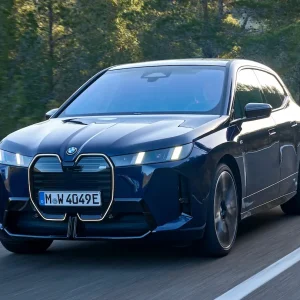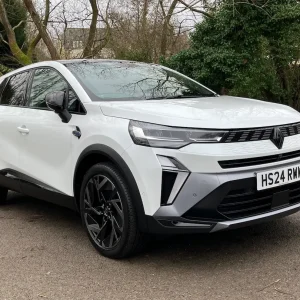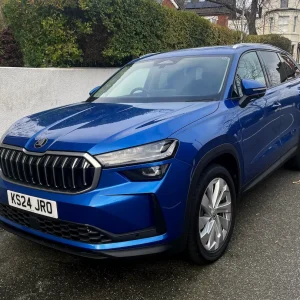Automotive facelifts all too often result in little more than an injection of vehicular Botox into tired grilles, headlamps and bumpers. Thankfully the mid-life X3 is more than that, due in large part to a massively important new engine under its bonnet that will feature in BMWs of all shapes and sizes (especially fleet-friendly ones) over the next few years.
But first, the visuals. The easiest way to differentiate the old mk2 X3 from it new facelift is to look at the headlamps. Where the old lights were more rhomboid, the new ones taper in towards the grille (as well as having more distinctive LED eyebrows). Along with subtle bumper and lower air intake twiddles, the changes give the car a noticeably keener look. Inside, the already decent cabin gets new material options but not much else, aside from a sliding cover for the centre cup-holders.
The bigger news is the new-generation, all-aluminium, 2.0-litre diesel engine, which, like the whole of the X3’s diesel-only range, is now Euro6-compliant. Compared with the old 2.0 auto, power is up (190hp vs 184hp), 0-62mph improved (8.1secs vs 8.5secs), economy boosted (54.3mpg vs 50.4mpg) and CO2 down (138g/km vs 149g/km).
The latter figure keeps the X3 BIK competitive (23% vs 24%) despite stiffer bands for 2014/15 and puts blue sky between it and rivals such as the Audi Q5 177hp 2.0 TDI auto (47.1mpg and 159g/km). Tax-savvy fleets should also consider the 17-inch aero wheels and reduced rolling-resistance tyres, which are a reasonable £340 option on the 18d and 20d SE models (and no-cost options on higher grades) to improve the 2.0’s figures to 56.5mpg, 131g/km and 22% BIK. Or if you can take the cut in power, pair with the two-wheel drive 150hp 18d and achieve 60.1mpg,
124g/km and 20%.
Only the expected best-selling 20d was available to drive, and only on-road, but it is still a wonderfully flexible engine in that realm, equally happy to tootle in traffic without stutter and fuss or accelerate to motorway speeds more rapidly, smoothly and quietly than a diesel has a right to.
Despite the high-up driving position, the car feels really stable and secure through corners and the steering firm and reassuring without being heavy. With the eight-speed auto ‘box the X3 performs better than with the six-speed manual (54.3mpg vs 52.3mpg) and although paddle-shifters are a cheeky £225 option on this engine, the extra control they provide is probably worth having.
The 520d is next to get the key diesel this autumn, promising 109g/km of CO2 and 68.9mpg, and then the facelift of the top-10 fleet-selling 320d is due in 2015. If similar economy and emissions gains are replicated, a sub-100g/km, circa 74mpg 3-series should be the result. A big deal, in other words.
| P11D price | £34,545 |
| Model price range | £30,995-£45,390 |
| Fuel consumption | 54.3mpg |
| CO2 (tax) | 138g/km (23%) |
| BIK 20/40% per month | £132/£265 |
| Service interval | variable miles |
| Insurance (1-50) | group 30 (est.) |
| Warranty | 3yrs/unlimted miles |
| Boot space (min/max) | 550/1600 litres |
| Engine size/power | 1995cc/190hp |
| Top speed/0-62mph | 131mph/8.1secs |
| On sale | June 2014 |





